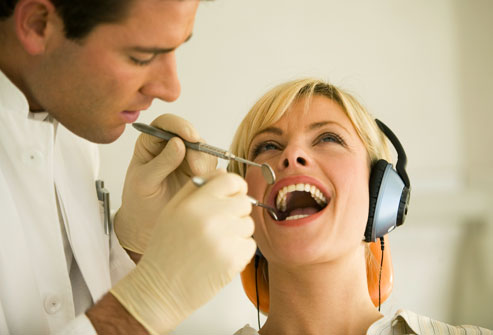Oral health care is vital if you want to keep your teeth, gums and mouth healthy, but is seems that despite all the oral health information available giving good oral hygiene advice, the majority are not getting their oral hygiene routine right as the growth of dental hygienist’s jobs in the US has increased greatly due to demand in recent years.
Most of the problems with oral health can be easily avoided with regular dentist health care and dental hygienist visits on a regular basis throughout the year, this ensures any problems are found early. If you experience any bleeding of the gums during brushing, it indicates that there could be a problem as does persistent bad breath which is also known as Halitosis. The earlier any oral health problems are found the cheaper it will be, dentist and dental hygienist prices can become very costly.
Good oral hygiene only takes a little time each day and if you want to avoid having bad breath, hard plaque build up and bleeding gums just follow these oral health care steps.
Good Oral Hygiene Steps
Ask your dental hygienist about good oral health care practice. They will show you exactly what to do for the best results, specifically for your individual teeth and mouth.
Don’t Smoke
Smoking depletes the body of calcium which in turn is bad news for your teeth. Smoking also makes your breath smell and stains the teeth. Besides this there have been a lot of oral health care concerns regarding mouth cancer due to the combination of smoking and drinking together as well as mouth, tongue and cheek cancers due to smoking and no amount of dental treatment will put this right once you have come this far.
Diet
A good diet is essential for healthy teeth and gums. Include calcium rich foods like nuts, cheese and chicken for strong tooth enamel. Apples, pears and firm fruits and vegetables aid in saliva production helping to get rid of food and acid. It is advisable to consume the more acidic fruit and vegetables like oranges within a bigger meal. Drink lots of water. Avoid candy and hard sugary sweets, sodas, and too many sugary cookies and cakes as these coat and stick to the teeth. Teeth staining is quite common amongst those that drink too much red wine, tea and coffee, so drink these in moderation.
Brushing Your Teeth
Brush your teeth twice a day and most importantly before you go to bed. Don’t brush too hard around the gums as this can result in receding gums in the future. Use short stokes and make sure you gently brush away from the gum line.
Toothbrushes should be replaced as soon as you see signs of wear. Do not share your toothbrush with anyone else and if you have had a cold or infection make sure you rinse the brush with a mouthwash or similar to clean the brush of bacteria.
Electric toothbrush or manual? My dentist told me it is not just about the brush or the toothpaste it is about the technique and how long you brush for. There are many electric toothbrushes on the market but my dental hygienist recommends OralB.
Most of us use a toothpaste containing fluoride which aids in preventing cavities and tooth decay. Many people however use a non fluoridated alternative especially those with younger children who may swallow more than is recommended of the toothpaste during brushing. Parents are concerned of the possibility of disfiguring dental fluorosis. Do your own research on this if you are concerned, alternative toothpaste can be found at most health stores.
Brush your tongue, a lot of toothbrushes have a gentle tongue scraper on the top of the toothbrush head. Using a mouth rinse or mouth wash is often recommended by your dental hygienist if necessary.
You Must Floss
Floss daily, ask your dentist if you should use dental floss or dental tape, one is thicker than the other and comfort of use is dependent on the space there is between your teeth. Use approximately 20 inches of dental floss, wrap enough around your fingers so that you have a firm grip on the floss and gently slot between all of the teeth working under the gum line, not too hard around the gum area though.






